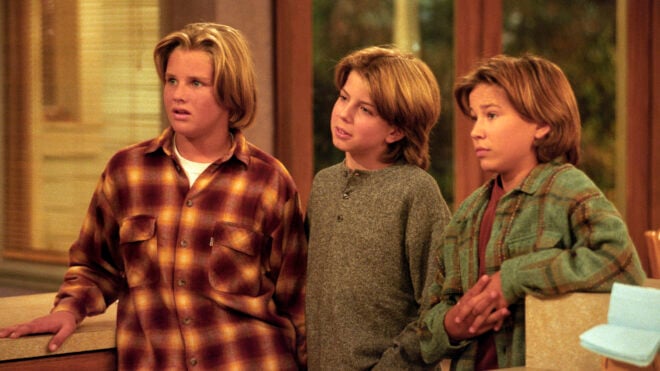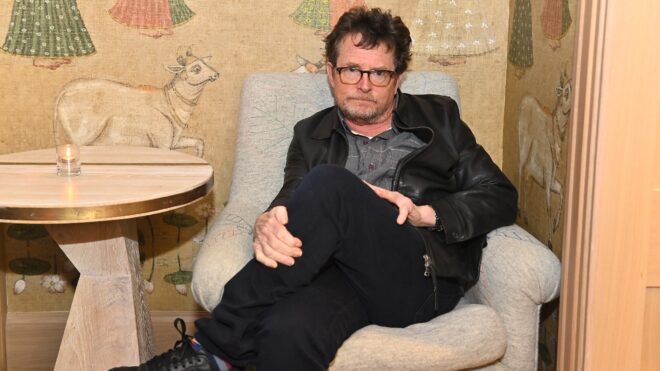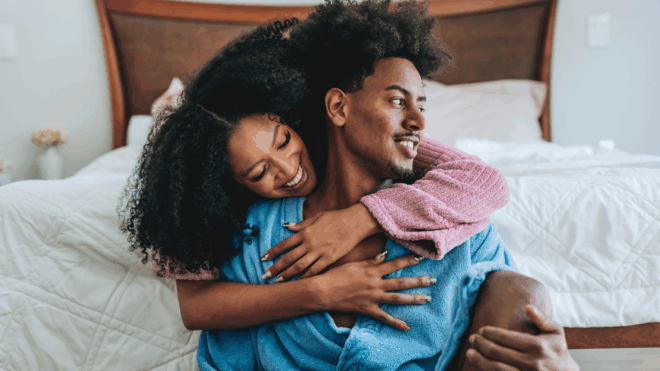
It has come the time again for us to take a hard look at our history books for the sake of our children's education. It's hard to deny our country's history has been told predominately through the white male lens. As such, so many important events and figures have been glossed over. Sometimes that's due to ignorance. Other times, it's a blatant erasure of history.
American women have been largely left out of the historical narrative. Over the years, many cultures have taken matters into their own hands. On a nuclear level, families and communities do. Thanks to the internet, we no longer have to accept a narrative crafted to make us see our history for what some people thought it was. Now those stories are freely available to us so we can see the full scope of things.
There are a lot of people working to change curriculums around the country to make them more reflective of everyone in our nation's history. We want to make sure our children are learning the full scope of history. In the meantime, these are some of the most important American women that you may have never heard of.
Emilia Casanova de Villaverde
Emilia Casanova de Villaverde was an activist and supporter of Cuban independence who lived in New York City. Emilia founded organizations toward Cuban independence and wrote articles for Spanish-language publications. She also met with President Ulysses S. Grant and went before the US Congress to lobby them to recognize the Cuban Republic in Arms.
Mary Jane Patterson
Mary Jane Patterson was the first Black woman to receive a bachelor's degree from an established American university. She graduated from Oberlin College and became a teacher. She became an assistant to Fanny Jackson Coppin at Philadelphia's Institute for Colored Youth.
She taught at the Preparatory High School for Colored Youth in Washington, DC. Later, Mary Jane would become the school's first Black principal. She would continue to teach high school until her death in 1894.
Dorothea Dix
Dorothea Dix was a schoolteacher who became a major advocate for the welfare of the mentally ill. She began her advocacy after traveling overseas and meeting reformers. When she returned to the US, she toured jails, almshouses, and houses of correction throughout Massachusetts. She then presented her findings in a proposal for a hospital especially for the mentally ill. She continued this work from state to state.
When the Civil War broke out, Dorothea was named the superintendent of army nurses for the Union Army. She received criticism for her high standard for selecting nurses at a time when many felt whoever was willing should serve. She stepped down from the position in 1865.
After the war, she resumed her advocacy and continued until she fell ill. She died in 1887.
Madam C. J. Walker
Madam C. J. Walker was the first female self-made millionaire in the United States. It was an especially impressive accomplishment for the daughter of former slaves. She built her empire by creating a homemade line of hair care products for Black women. She created her own hair care method, the Walker method, which involved scalp preparation, lotions, and iron combs.
As she made her money, Madame Walker used it for good. She funded scholarships for women at the Tuskegee Institute. She also donated large amounts to the NAACP, the Black YMCA, and other charities.
Chien-Shiung Wu
Chien-Shiung Wu is known as the "first lady of physics." Her story is one of chance. She only got an education because her father was the founder of the Mingde Women's Vocational Continuing School and believed girls should be educated.
She graduated from National Central University in Nanking (now Nanjing University) with a degree in physics in 1934. She worked in a physics lab in China before coming to the United States to continue her education.
In 1940, Chien-Shiung Wu graduated with her PhD in physics from the University of California, Berkeley. In 1942, she began working at Columbia University, where she worked on the Manhattan Project. She is also well known for her experiments with beta decay, which she conducted in 1957. In 1975, she received the National Medal of Science. She was also the first living scientist to have an asteroid named after her.
Sister Rosetta Tharpe
Sister Rosetta Tharpe was a queer Black woman who was the godmother of rock 'n' roll. She grew up in a family of religious singers. She first picked up a guitar at 4 years old, and from there, history began to unfold.
Sister Rosetta came up singing spiritual music with her mother in Chicago. As she got older, she became immersed in Delta blues, New Orleans jazz, and gospel music. By the 1930s, she shined for her rare presence. She sang both religious and secular music as a Black woman playing guitar.
In 1946, she met singer Marie Knight, and the women began touring together. It was an open secret that the two were involved romantically, continuing until they split in 1950.
Lucy Diggs Slowe
Lucy Diggs Slowe was born in Lexington, Virginia, but moved to Baltimore at the age of 6 after parents died. She lived with her aunt there and entered the Baltimore segregated public school system at age 13. She was an incredible student and graduated in 1904, making her the first female graduate.
Lucy went to Howard University and was the first scholarship recipient from her alma mater to enter there. At Howard, she became a founding member of the Alpha Kappa Alpha sorority, the first Greek-letter organization for African American women. She graduated in 1908 and taught briefly before returning to school at Columbia University, where she got her master's degree.
Aside from her impressive academics, she was also a skilled tennis player. Lucy became the first Black woman to win a national title in any sport by winning the first women's title at the American Tennis Association’s national tournament in Baltimore in 1917.
Lucy went on to become Howard's first dean of women. She worked on optimizing the female experience at the school and dedicated herself to preparing Black women as leaders.
Patsy Mink
Patsy Mink was a Hawaiian native from before it became a state. She got degrees in zoology and chemistry in 1948. Then she attended law school at the University of Chicago. She met and married John Mink there. A year after her graduation in 1951 they moved back to Hawaii.
Patsy passed the bar but had trouble finding work because she was discriminated against for being in an interracial marriage. She started her own practice instead, becoming the first Japanese American woman to practice law in the state. When Hawaii became a state, Patsy unsuccessfully ran for Congress.
She didn't give up and landed a seat in the state Senate. She would get elected to the US House of Representatives in 1964, making her the first Asian American woman to serve in Congress. She served on the Committee on Education and Labor, Committee on Interior and Insular Affairs, and the Budget Committee. One of her biggest accomplishments was the 1974 Women's Educational Equity Act to promote gender equality in schools.
Mary Ware Dennett
Mary Ware Dennett was an early advocate for sex education and birth control. Mary gave birth to three kids, becoming ill after each time. Her doctor warned her not to get pregnant again because of a laceration in her uterus. Without contraception, the couple couldn't have sex. As a result, Mary's husband began an affair with a family friend and decided on divorce in 1909. He wanted custody of their two sons but wasn't granted it when the divorce was finalized in 1913.
Mary accepted a position as the field secretary of the Massachusetts Suffrage Association in Springfield, Massachusetts. This got her a foot in the door with the National American Woman Suffrage Association in New York City, where she was elected as a correspondence secretary and served from 1910 to 1913, when she went to the Twilight Sleep Association.
She began getting involved in activism through her work with the Women's Peace Party in 1914. The next year, her son started showing interest in and asking questions about sex. Mary wrote a pamphlet titled, "The Sex Side of Life: An Explanation for Young People." It was the first kind of sex education material of its time, with realistic and straightforward descriptions of sex without judgment or shame. It quickly spread among her friend group.
Through those connections, Mary met Jessie Ashley and Clara Gruening Stillman, whom she worked with to create the National Birth Control League in 1915. Mary lobbied to remove birth control from obscenity laws and allow women the ability to control their fertility.
After resigning from her work there, Mary sent her pamphlets by mail to people who requested it. A woman reported her, and in United States v. Dennett, the court ruled that Mary's pamphlet was obscene and fined her $300. She appealed the ruling and had it reversed months later.
Wilma Mankiller
Wilma Mankiller was the first female principal chief of the Cherokee Nation. She grew up the descendant of Cherokee Indians forced to leave their homelands in the 1830s. She grew up on Mankiller Flats in Oklahoma before moving to California with her family in the mid-1950s.
Wilma graduated from Flaming Rainbow University in Oklahoma with a bachelor's degree in social sciences. She got interested in Native American issues and returned to Oklahoma in the 1970s. She began working for the government of the Cherokee Indian Nation as a tribal planner and program developer.
She nearly died in a car accident in 1979 when she was struck head-on by a friend, who died. Wilma needed numerous surgeries and battled myasthenia gravis, a neuromuscular disease that can cause paralysis.
Wilma ran for deputy chief of the Cherokee Nation in 1983 and won, serving for two years. She was named the first principal chief of the Cherokee Nation in 1985 and served until she became ill and decided not to seek election in 1995.
Jane Cooke Wright
Jane Cooke Wright was the daughter of one of the first Black graduates of Harvard Medical School. With high expectations, Jane excelled. She graduated with honors from New York Medical College in 1945 and spent the next year interning at Bellevue Hospital.
Jane did a residency at Harlem Hospital, where she would serve on the Cancer Research Foundation with her father. Jane began developing chemotherapy with her father. He would die before it came to fruition, leaving Jane to be appointed head of the Cancer Research Foundation at the age of 33.
Three years later, Jane became an associate professor of surgical research at New York University and director of cancer chemotherapy research at New York University Medical Center and its affiliate hospitals. In 1964, President Lyndon B. Johnson appointed her to the President's Commission on Heart Disease, Cancer, and Stroke. In 1967, she was named professor of surgery, head of the Cancer Chemotherapy Department, and associate dean at New York Medical College.
Jane continued to make incredible advancements. She became the first woman president of the New York Cancer Society in 1971. She retired in 1987.
Kalpana Chawla
Kalpana Chawla was fascinated with airplanes and flying her entire life. She moved to the United States in 1982 to obtain her master's degree in aerospace engineering from the University of Texas at Arlington, which she completed in 1984. She continued on, getting a second master's and a PhD in aerospace engineering.
Kalpana began working at NASA Ames Research Center in 1988. After becoming a naturalized US citizen in April 1991, she applied for the NASA Astronaut Corps. She entered in March 1995 for her first flight in 1996.
Her first space mission began on November 19, 1997. Kalpana was part of the six-astronaut crew that flew the space shuttle Columbia, making her the first Indian woman to fly in space. She served as a mission specialist and primary robotic arm operator.
She returned to the Columbia in 2003 in an ill-fated mission that saw Kalpana and six other crew members die when the shuttle disintegrated upon reentering the Earth's atmosphere over Texas.
Suzan Shown Harjo
Suzan Shown Harjo has dedicated her career to her tireless work on Native American policy. Her mother was Cheyenne and her father Muscogee. She coproduced the first Native American news radio shows in the country in the mid-1960s.
Suzan loved and worked in the arts. When she saw sacred garments in the Museum of the American Indian in New York in 1967, she worked toward repatriation for tribes and change in museum policies.
In 1974, Suzan and her husband moved to Washington, DC. There, she worked as a legislative liaison for two law firms representing Native rights. President Jimmy Carter appointed Suzan as a congressional liaison for Indian affairs in 1978. She worked with subcommittees and lobbied for the American Indian Religious Freedom Act, passed the same year. She would go on to help develop other key laws, like the National Museum of the American Indian Act and the Native American Graves Protection and Repatriation Act.
Suzan is also president of the Morning Star Institute, a national Native American rights organization working to help sports organizations drop hurtful associations toward Native Americans, a moment we're seeing unfold today.
Mary Kenner
Mary Kenner paved the way for the modern menstrual pads with her invention of a sanitary napkin belt. Mary was born into a family of inventors and began tinkering with things at just 6 years old. She attended Howard University but had to drop out because of financial struggles. She worked odd jobs while working on her inventions, which she struggled to save money to patent.
In 1957, she saved up for her first patent, the belt. She created an adjustable belt with an inbuilt, moisture-proof napkin pocket. At a time when women were still using rags and cloth pads, her invention made it less likely that menstrual blood could leak and stain clothes. Sonn-Nap-Pack Company showed interest in the product but turned it down when they discovered Mary was a Black woman. The idea wouldn't be utilized for another 30 years.
Mary continued inventing, and ultimately filed five patents, more than any other Black woman in history.
Cecilia Chung
Cecilia Chung is a transgender Asian American civil rights activist who has advocated for transgender and HIV/AIDS communities. She was born into a traditional Chinese family and came out as trans after graduating from college. She was rejected by her family.
With nowhere to live and having lost her job after her employer noticed her transition, Cecilia turned to sex work to survive. She was diagnosed with HIV in 1993.
Cecilia became an advocate for LGBTQ health. She worked as an HIV program coordinator at the Asian Pacific Islander Health Forum, as well as serving as the deputy director at the Transgender Law Center.
She was homeless for three years when she was stabbed during a sexual assault and transferred to the emergency room. It was there that she reunited with her mom, whom she'd been estranged from since coming out.
Cecilia physically transitioned and continued with her advocacy. She was the first transgender woman and first Asian to be elected to lead the board of directors of the San Francisco Lesbian, Gay, Bisexual, and Transgender Pride Celebration. She was also the first transgender woman and first person living openly with HIV to chair the San Francisco Human Rights Commission.




